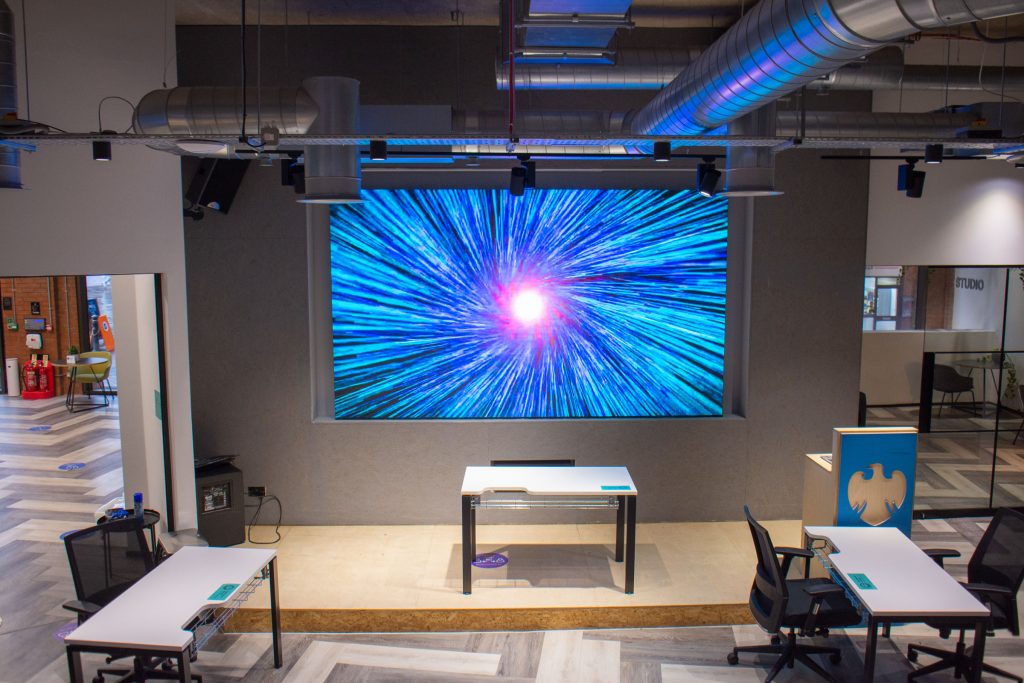It’s a popular time of year for trade shows and exhibitions, as people are back from their summer breaks and businesses want to launch new products before the Christmas juggernaut starts gearing up for the season.
Trade shows are a popular way to connect with new customers and raise brand awareness. However, it can take a lot of effort to stand out from the crowd in an increasingly competitive area. LED screens are an excellent way to boost the presence of your booth. Here’s a look at how to get the most out of your digital display.
Understand your target audience
The first step to successful digital content is knowing who you are designing for. Research your target market in detail beforehand, so that you can tailor your content to appeal directly to them.
For example, if it is a B2B event you can assume that potential customers will already have a good understanding of the sector and are looking to drill down into technical details. They will want evidence-based data on how your product or service performs, and proof of why it would be superior to a competitor’s offerings.
On the other hand, a B2C audience is more likely to want to know more about how the product will solve their problems or make their lives easier. Consider including video content that shows demonstrations of the product being used in its intended context, such as a mountain bike being ridden over rough muddy terrain and so on.
Use dynamic video content to highlight different features of your product and include testimonials from past satisfied customers.
Attract attention with novel layouts
LED screens do not have to be limited to flat squares or rectangles. They can be curved, or even fitted around three-dimensional objects. The screens can be fitted together to create an LED wall that forms the entire backdrop of the booth, and even fitted to the flooring or roof. Novel layouts can attract the attention of passersby and give more creative freedom.
Make use of perfect pixel pitch
Pixel pitch refers to the distance between the thousands of tiny individual LED pixels that make up the screen. The closer the pixels are together, the lower the pixel pitch and the clearer the image quality will be. If you are displaying content with a lot of details, such as text and graphics, then a high resolution screen is essential for the best results.
More abstract images that are intended to be viewed from a distance do not necessarily require the same crispness and clarity, but consider other methods of standing out in a crowded arena. The beauty of an LED screen is that even a low-resolution image will display with high colour contrast, bringing depth and richness.
Make the most of the brightness and vibrancy of the screen with bold-eye catching colours that will turn heads from across a crowded room.
Create interactive content
Visitors to exhibition stands no longer expect to be passive viewers who have to settle for a one-size-fits-all experience. Use the interactive features available in your content management system, such as touch screen options, quizzes, polls and so on.
Viewers should be able to navigate the content to find out more about the products or services they are interested in, or even register their details for a personalised experience. This keeps visitors engaged and boosts dwell time at your stand, which is more likely to generate new leads and conversions.
The screens can also be integrated with social media feeds that display content relevant to the exhibition, including user-generated content. Encourage visitors to share their photos and comments on their experiences of the event to boost engagement and create a buzz around your booth.
Take advantage of dynamic content displays
Unlike static displays, LED screens can be quickly and easily updated to reflect the type of enquiries you are getting, the flow and size of the foot traffic near to your booth, and also to add interest and variety to your display.
Prepare plenty of content so that you have the choice of regularly rotating and refreshing it throughout the day, to keep your booth interesting and to respond to unfolding events.

